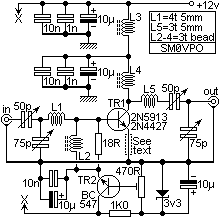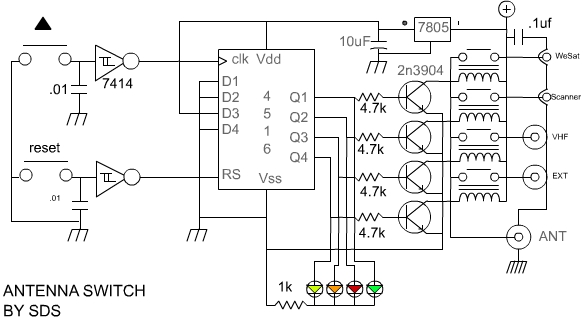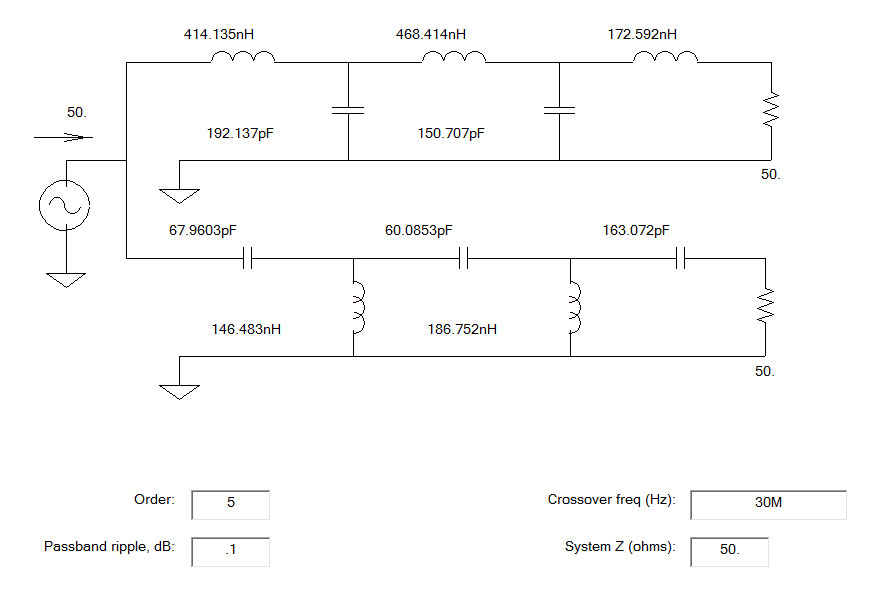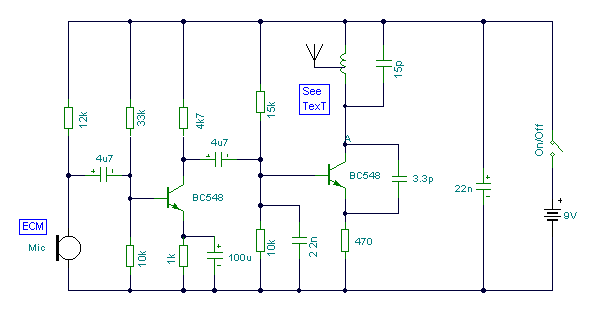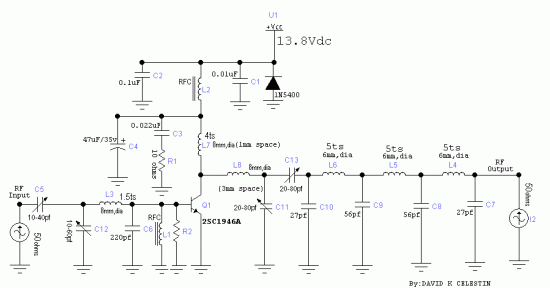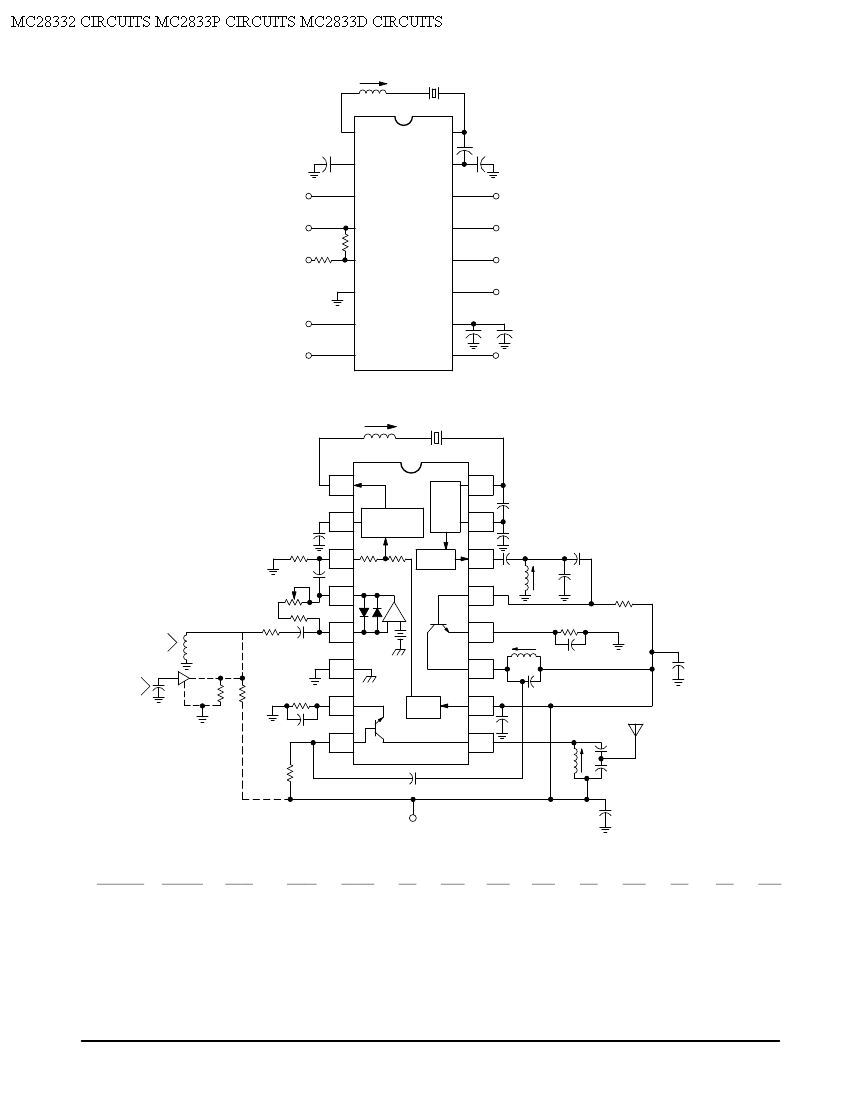
VHF Stability
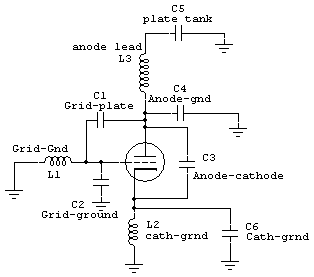
The intelligent discussion of VHF systems necessitates an understanding of how VHF energy propagates through a system. At VHF frequencies, the wavelength is relatively short, calculated as F/983, where F is the frequency in MHz. For example, a typical 150 MHz system would have a quarter wavelength of approximately 19.8 inches. This calculation does not account for the velocity factor of the dielectric or the uneven distribution of series inductances and shunt capacitances, which can cause the electrical distance along a conductor to appear significantly longer than its physical length. A general rule of thumb indicates that two electrical degree length paths have a minimal impact on system impedances. While this distance is 3 feet on 160 meters, two electrical degrees correspond to roughly 0.5 inches at 150 MHz. A 10-inch long conductor, particularly if it is thin and surrounded by dielectric, behaves similarly to having no conductive path at all for VHF applications. However, there are suggestions within the online community to add thin wires from grid pins to tuning capacitors to optimize the path from the tuning capacitor to the grid in specific amplifier designs. This concept mirrors the misguided approach taken by Johnson engineers in their Valiant and Ranger transmitters, where they employed a bus wire to ground tuning capacitors to the 6146 socket ground, resulting in issues related to ground loops and VHF harmonic suppression. A comparable misconception is found in HF amplifiers, where modifications involve adding even thinner and longer wires from tuning capacitors to the grid pins of tube sockets. An example of this is observed in a Kenwood TL922 that was modified in such a manner, indicating a lack of understanding regarding wavelengths and transmission line behavior. For effective VHF paths, conductors should be short and wide, ideally utilizing smooth surfaces. A wide conductor behaves more like a ground plane rather than a transmission line. For instance, a 20-inch metal radius provides a low impedance ground path at VHF frequencies, while a 20-inch thin wire may appear to have no ground connection between two points. To achieve reasonable outcomes, it is essential to abandon flawed logic or pseudoscience when implementing changes. If a tuning capacitor is inadequately connected back to the grid at VHF due to a long path through a 10-inch wide sheet, simply adding a few inches of a 0.060-inch wide conductor in parallel will not enhance performance. The idea that a thin conductor in parallel with a wide ground plane can reduce path impedance is unfounded. A similar misunderstanding is present in discussions by a west coast amateur regarding VHF suppressors, who treats the suppressor as an isolated component that solely determines anode system Q. In reality, the anode suppressor is merely a small segment of a much longer path that functions as a transmission line. The Q of the suppressor, when considered in isolation, has minimal relevance to the overall behavior of the system. It is necessary to evaluate the suppressor in the broader context of how it alters the overall impedance of a more complex system. This is why each suppressor must be optimized for a specific system, as evidenced by commercial designs where a universal solution is often inadequate. In many instances, no suppressor is needed, and when one is required, the specific characteristics of the system dictate the necessary design.
The VHF systems operate within a unique set of parameters that dictate the design and implementation of circuits. Understanding the behavior of VHF energy is crucial for effective circuit design, particularly in applications such as RF amplifiers and transmitters. The wavelength at VHF frequencies is short, leading to the necessity of considering the physical dimensions of components and pathways in relation to the wavelength. The relationship between frequency, wavelength, and impedance becomes essential, as incorrect assumptions regarding component placement can lead to significant performance issues.
In practical applications, the layout of circuits should prioritize short and wide conductive paths to minimize inductive and capacitive effects that can distort signal integrity. The use of wide conductors or ground planes is recommended to ensure low impedance connections, which is particularly important in VHF applications where even small deviations can lead to performance degradation. The design of tuning networks and suppressors must be approached with a comprehensive understanding of their role within the entire circuit, rather than as isolated components. This holistic view is necessary to optimize the performance of VHF systems, as each component interacts with others in ways that can significantly influence overall behavior.
In conclusion, the design of VHF systems requires careful consideration of the physical properties of conductors, the implications of electrical lengths, and the interactions between components. A thorough understanding of these principles is essential for achieving optimal performance in VHF applications.The intelligent discussion of VHF systems requires a feel for VHF systems, and how VHF energy moves through a system. At VHF, wavelength is very short. Wavelength in feet is F/983. 6, a typical 150 MHz system would have a quarter wavelength of 19. 8 inches. This does not include velocity factor of dielectric, or unevenly distributed series inductances or shunt capacitances, which can make electrical distance along a conductor appear much longer than it is. The general rule of thumb is two electrical degree length paths will have a negligible effect on system impedances.
While that is 3 feet on 160 meters, two electrical degrees is roughly 1/2 inch on 150 MHz. A 10-inch long conductor, in particular a thin conductor with a dielectric, is just like having no path at all for VHF, yet we see Internet suggestions of adding thin wires from grid pins up to tuning capacitors to beneficially alter the path from tuning capacitor to grid in some amplifier layouts! This is the same false notion Johnson engineers used in the Valiant and Ranger transmitters. In the image below, Johnson used a buss wire to ground tuning capacitors to the 6146 socket ground, which turns out to be a disaster for ground loops and VHF harmonic suppression.
A similar fallacy exists in HF amplifiers, where people add an even thinner and longer wire from tuning capacitors to the grid pins of tube sockets. A Kenwood TL922 I worked on had just such a mod, clearly the installer had no idea about wavelengths and transmission line behavior.
They used a thin wire several inches long, shown below, in an attempt to reduce tuning capacitor to grid path impedance! VHF paths must be short and very wide, and ideally would be smooth surfaces. A wide path acts more like a groundplane, instead of a transmission line. For example, a 20-inch metal radius makes a very low impedance ground path at VHF, yet a 20-inch thin wire can look like no ground connection at all between two points!
If we want reasonable results, we have to stop following unreasonable logic or junk science when making changes. If a tuning capacitor is poorly connected back to the grid at VHF, because the path through 10-inch wide sheet is too long, we are NOT going to improve it with an additional several inches length of.
060 inch wide conductor in parallel. The notion something so thin in parallel with a wide ground plane helps reduce path impedance is silly. A similar error occurs in a west coast amateur`s discussions of VHF suppressors. He treats the VHF suppressor as an isolated component that solely determines anode system Q. The anode suppressor is actually one small section of a much longer path that behaves like a transmission line.
The suppressor Q, in isolation, means very little to overall system behavior. We have to look at the suppressor in full context of how it modifies a much more complex system`s overall impedance. This is why every suppressor, when optimized, must be optimized for a particular system. As we see when we look at commercial designs, one size does not fit all. In many cases no suppressor at all is required, and when required, depending 🔗 External reference
The VHF systems operate within a unique set of parameters that dictate the design and implementation of circuits. Understanding the behavior of VHF energy is crucial for effective circuit design, particularly in applications such as RF amplifiers and transmitters. The wavelength at VHF frequencies is short, leading to the necessity of considering the physical dimensions of components and pathways in relation to the wavelength. The relationship between frequency, wavelength, and impedance becomes essential, as incorrect assumptions regarding component placement can lead to significant performance issues.
In practical applications, the layout of circuits should prioritize short and wide conductive paths to minimize inductive and capacitive effects that can distort signal integrity. The use of wide conductors or ground planes is recommended to ensure low impedance connections, which is particularly important in VHF applications where even small deviations can lead to performance degradation. The design of tuning networks and suppressors must be approached with a comprehensive understanding of their role within the entire circuit, rather than as isolated components. This holistic view is necessary to optimize the performance of VHF systems, as each component interacts with others in ways that can significantly influence overall behavior.
In conclusion, the design of VHF systems requires careful consideration of the physical properties of conductors, the implications of electrical lengths, and the interactions between components. A thorough understanding of these principles is essential for achieving optimal performance in VHF applications.The intelligent discussion of VHF systems requires a feel for VHF systems, and how VHF energy moves through a system. At VHF, wavelength is very short. Wavelength in feet is F/983. 6, a typical 150 MHz system would have a quarter wavelength of 19. 8 inches. This does not include velocity factor of dielectric, or unevenly distributed series inductances or shunt capacitances, which can make electrical distance along a conductor appear much longer than it is. The general rule of thumb is two electrical degree length paths will have a negligible effect on system impedances.
While that is 3 feet on 160 meters, two electrical degrees is roughly 1/2 inch on 150 MHz. A 10-inch long conductor, in particular a thin conductor with a dielectric, is just like having no path at all for VHF, yet we see Internet suggestions of adding thin wires from grid pins up to tuning capacitors to beneficially alter the path from tuning capacitor to grid in some amplifier layouts! This is the same false notion Johnson engineers used in the Valiant and Ranger transmitters. In the image below, Johnson used a buss wire to ground tuning capacitors to the 6146 socket ground, which turns out to be a disaster for ground loops and VHF harmonic suppression.
A similar fallacy exists in HF amplifiers, where people add an even thinner and longer wire from tuning capacitors to the grid pins of tube sockets. A Kenwood TL922 I worked on had just such a mod, clearly the installer had no idea about wavelengths and transmission line behavior.
They used a thin wire several inches long, shown below, in an attempt to reduce tuning capacitor to grid path impedance! VHF paths must be short and very wide, and ideally would be smooth surfaces. A wide path acts more like a groundplane, instead of a transmission line. For example, a 20-inch metal radius makes a very low impedance ground path at VHF, yet a 20-inch thin wire can look like no ground connection at all between two points!
If we want reasonable results, we have to stop following unreasonable logic or junk science when making changes. If a tuning capacitor is poorly connected back to the grid at VHF, because the path through 10-inch wide sheet is too long, we are NOT going to improve it with an additional several inches length of.
060 inch wide conductor in parallel. The notion something so thin in parallel with a wide ground plane helps reduce path impedance is silly. A similar error occurs in a west coast amateur`s discussions of VHF suppressors. He treats the VHF suppressor as an isolated component that solely determines anode system Q. The anode suppressor is actually one small section of a much longer path that behaves like a transmission line.
The suppressor Q, in isolation, means very little to overall system behavior. We have to look at the suppressor in full context of how it modifies a much more complex system`s overall impedance. This is why every suppressor, when optimized, must be optimized for a particular system. As we see when we look at commercial designs, one size does not fit all. In many cases no suppressor at all is required, and when required, depending 🔗 External reference
Warning: include(partials/cookie-banner.php): Failed to open stream: Permission denied in /var/www/html/nextgr/view-circuit.php on line 713
Warning: include(): Failed opening 'partials/cookie-banner.php' for inclusion (include_path='.:/usr/share/php') in /var/www/html/nextgr/view-circuit.php on line 713
